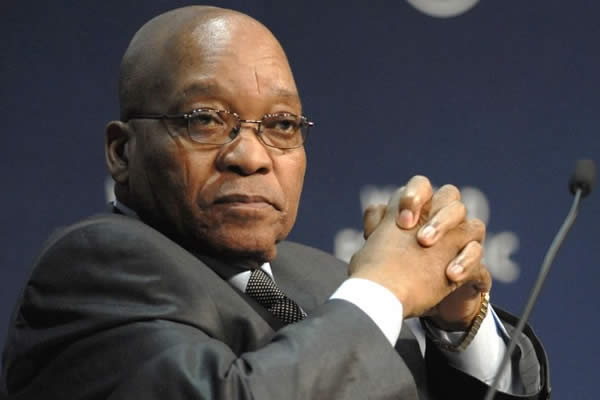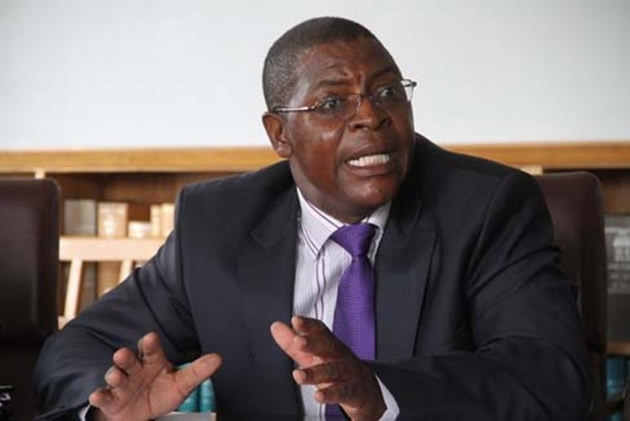Zuma dreams of a people without colour

The concept of a “Rainbow Nation” embraced by South Africa is worth emulating as it call on all citizens to unite regardless of their creed, race or colour, for the sake of development However, the yawning gap between the poor and the rich tells another story.
South Africa, though a powerhouse on the African economic scene, is the most unequal country on the continent as the black majority wallows in want on a beach of gold.
Whites control the means of production, land and mineral resources.
Some places are still reserved for whites, either by design or default, 20 years after the demise of apartheid; and black neighbourhoods are synonymous with crime, violence and poverty.
Racism is prevalent, and opportunities for blacks and other minority groups illusive.
South African Literature of the 1940s and 1950s is eye-opening in contextualising this unchanging state of affairs.
In “Down Second Avenue” (1959), Ezekiel Mphahlele explores the mundane and sordid experiences of the black man in the slums of the land of plenty.
The city lights are said to be “so close and yet so far away”, which is suggestive of hopelessness and desperation.
Peter Abrahams in “Mine Boy” (1946), like Alan Paton in “Cry the beloved Country” (1948), yearns for equal opportunities for all South Africans regardless of creed or race.
The novel marks the beginning of protest literature in South Africa which conforms to Frantz Fanon’s literature of combat, as expressed here: “A literature of combat, in the sense that it calls on the whole people to fight for their existence as a nation . . . a literature of combat, because it moulds the national consciousness, giving it form and contours and flinging open before it new and boundless horizons . . . a literature of combat because it assumes responsibility and because it is the will to liberty expressed in terms of time and space.”
Abrahams’ other works “Song of the City” (1945), “Path of Thunder” (1948) and “Wild Conquest” (1950) also conform to the same concept.
“Mine Boy” is the story of Xuma, an illiterate young man from the countryside who finds himself in Johannesburg in search of employment in the mines.
His first port of call at Leah’s place, a sprawling shebeen, exposes his foibles as a man but also establishes his resolve.
After spending three months at Leah’s place Xuma, who has a passion for the land but lacks any basic Western education because “there are no schools” where he comes from, finds his own place at the other end of Malay Camp after securing employment at the mines with the help of Johannes.
It is at the mines that he assumes the name Zuma from his boss, Paddy or The Red One, who could not “make the X in (his) name sound right”.
At the mines, Zuma is constantly reminded of the law, which reduces the black migrant worker to a dunce who smiles as his lungs are exposed to the vagaries of both nature and Man.
He is expected to work like an automaton until he is sapped, diseased and retired to die.
The predicament that the non-whites find themselves immersed in awakens something inside him.
The inequality of life which pits the black man as the hunted and the white man as the hunter gives him a rude awakening.
Leah tells him, “In the city it is like this: all the time you are fighting.
“Fighting! When you are asleep and when you are awake. And you look only after yourself. If you do not you are finished. If you are soft everyone will spit in your face. So, to live here, you must be hard.
“Hard as a stone. And money is your best friend.”
Abrahams is able to effectively highlight the relationship between blacks and whites in apartheid South Africa.
The protagonist is all brawn, but his mental stamina does not tally with his strength.
But it is this lack of inhibition which is his trump card as he negotiates his passage in the rough terrain called the city, and the mines where everyone calls the white man “baas” and Zuma doesn’t.
Like Johannes, he is able to use his massive strength at the mines as a baas boy for The Red One, which makes him the envy of all and sundry, and elicits his boss’ affection.
Johannes, on the other hand, is split into two personalities: the sober one who is so passionate about life, shy and hard to provoke; and the drunken one, who is violent, arrogant and pugnacious. It is the latter that makes him survive the madness of it all.
Zuma witnesses segregation first-hand when a police van pitches up at an entertainment joint in Vrededorp, which is a coloured section, and all blacks disperse amid screams as heavy batons descend on them.
In his ignorance, the protagonist decides not to run away because “he had done nothing”.
When the white policeman brings down his stick heavily on him, he grabs his arm and strikes him hard in the face and he collapses.
In the ensuing melee, Zuma is helped by a coloured man to escape, and when asked by Leah why he did it and why he didn’t run, he innocently asks: “Must a man run who has done nothing?”
Because of his temperament, so the white man says, a man of colour should not be allowed to imbibe anything alcoholic and there should this not be any bars for him.
But the black man needs a vent to escape from the burden of reality. Hence, he finds the elixir in street fighting and skokiaan — a potent brew sold in the shebeens.
The war between shebeen queens like Leah and the police breeds rivalry, chicanery and betrayal which are detrimental to meaningful resistance.
Torn between two women, the beautiful Eliza, a teacher, and Maisy, a maid for a white family, Zuma realises the folly of lack.
Eliza genuinely loves him, but she is so passionate about white things and hates being black, saying: “I want the things of the white people.
“I want to be like white people and go where they go and do the things they do and I am black. I cannot help it. Inside I am not black and I do not want to be a black person.”
Deprivation here should not be construed to mean betrayal.
Eliza as a human being should not apologise for having an affinity for good things which are said to be a preserve of white folk.
Di, Paddy’s girlfriend tells him: “Listen, Zuma. I am white and your girl is black, but inside we are the same.
“She wants the things I want and I want the things she wants.”
The Red One wants to be Zuma’s friend, and he tells him that he should think as a man first before he thinks of himself as a black man, but the reality on the ground differs.
The black man has to think in terms of his lacks and his existence in a world where he is said to be invisible “simply because people refuse to see (him)” as in Ralph Ellison’s “Invisible Man”.
And the tragedy of it all is that the whites, in Di’s words, “want to decide who the good native is and they want to do good things for him.
“They want to lead him. To tell him what to do.
“They want to think for him and he must accept their thoughts”.










Comments